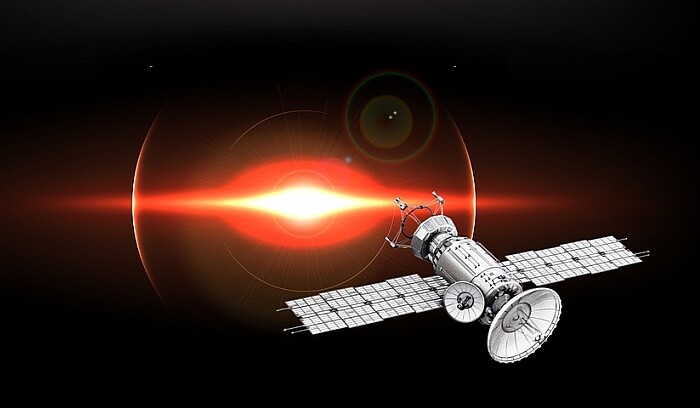The 31 currently functional artificial satellites (plus one reserve player floating through Space on an imaginary bench) create the cosmic segment of one of the best inventions ever - GPS. The Global Positioning System is receiving and sending signals to our earth-bound devices to help us with many daily tasks.
The system was originally designed for 24 satellites and having 31 of them active means that if one or more of them will fail (or be eaten by a Space Kraken), it will still work. It also increases its precision.
So yes, now even a satellite knows if you park your car a bit awry. But floating isn’t exactly what the satellites do. Rather, they are sprinting through the void at 11,8 km/h!
Completing one circle around Earth takes them 11 hours and 58 minutes, which is exactly half of the sideric day.
Let’s conquer the orbit!
The GPS is not a super recent technology - if it would be a jeans cut, it would be probably slowly coming back into fashion now. The first satellite was sent to the orbit in 1978 and since then we condemned to a life of lonely space voyeurism 69 more.
They were sent off from the Vandenberg Air Force Base near Los Angeles and later from Cape Canaveral on the East coast of Florida.
As anything that is created and recreated many times over decades - like jeans, phones or the song Yesterday - the satellites are quite different from each other.
For example the type of their onboard computer, the size of the fuel tank or the level of shielding against cosmic radiation can tell us when they were born and also show us how far the technology has advanced.
Assembling a GPS Satellite
Most of the time we can’t even see them, but the GPS Satellites are no tiny machines. Each of them weighs around 1,8 tons and functions on solar energy.
And because we don’t even want to imagine what would happen if people had to navigate with normal paper maps, they are also equipped with batteries for event such as the Solar Eclipse.
That’s important, because of course the GPS Satellites don’t only help with navigation to the commoners, but provide information to many other systems and services we take for granted, need or are keeping peace on our planet.
One of the main ingredients for success of the the whole GPS is precisely synchronized time of the whole system. Each of the satellites is carrying three or four really fancy watches - the atomic clock. It uses the electron transition frequency of atoms of rubidium or cesium to perfectly measure time.
So if you tend to be late and like to use the excuse of “my watch shows me a different time”, don’t get an atomic clock. It is going to get behind the actual time by one second in several billion years.
Another crucial part of every GPS Satellite is a system of antennas that are beaming information about the current position to the GPS receiver and also ensure that the Satellites can communicate with the stations of the Control segment and even chat between themselves.

